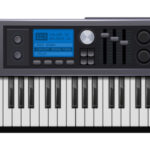Struggling with fingers that seem to collapse every time they hit the piano keys? You're not alone. Many budding pianists face this challenge, but there's good news—it's fixable. The key to stronger fingers lies in understanding the cause and practicing the right techniques.
Building finger strength and preventing collapse requires patience and persistence. Whether it's your first time sitting in front of the piano or you're looking to refine your skills, there are effective strategies to keep your fingers firm and agile. Let's dive into how you can transform your piano playing experience by tackling this common issue head-on.
Understanding the Root Cause of Finger Collapse
When piano players find their fingers collapsing while trying to play, it’s often a sign that they're not yet accustomed to the level of technique needed for piano playing. The root causes of finger collapse range from insufficient finger strength to improper hand positioning, and understanding these causes is the first step towards addressing the issue.
Firstly, insufficient finger strength is a common culprit. Playing the piano demands a certain level of muscular strength and endurance in the fingers, which can only be developed over time through consistent practice. When the muscles are not yet strong enough, the fingers can collapse under the pressure of hitting the keys.
Another significant factor is improper hand positioning. Correct hand posture is crucial for effective piano playing. If the hands and fingers are not positioned correctly over the keys, it can lead to poor leverage and finger collapse. Good posture allows for better control and distribution of pressure across the fingers, helping to keep them straight and strong while playing.
Lack of coordinated movement between fingers also contributes to this issue. Coordinated finger movement ensures that each finger plays its part without placing undue strain on the others. Without this coordination, some fingers may collapse while trying to compensate for others.
Lastly, tension and stiffness in the hands and arms can lead to finger collapse. When there is too much tension, the natural movement of the fingers is restricted, making it difficult to maintain their position on the keys. Learning to play with a relaxed posture is essential for preventing collapse.
Understanding these causes is pivotal for piano players. Once they know what to look out for, they can focus on specific areas for improvement in their practice routines. It’s important for them to remember that overcoming finger collapse is a gradual process that requires patience and persistence.
Proper Finger Placement on the Piano Keys

Proper finger placement is fundamental for preventing finger collapse and ensuring a smooth playing experience. When fingers are correctly aligned on the piano keys, pianists have better control and can avoid unnecessary tension, enabling them to play more effectively.
The thumb, as the shortest finger, should rest lightly beside the keys, not on top or too far beneath them. For the other fingers, maintaining a curved position is crucial. This curvature should resemble a relaxed arch, allowing each finger to strike the keys with appropriate force and precision. It's also important to ensure that fingers are not too stretched out or cramped together, as this can lead to strain and, consequently, finger collapse.
Key Points for Proper Finger Placement:
- Curved Fingers: Keeping fingers curved ensures that they can easily press down the keys without collapsing.
- Thumb Positioning: The thumb should stay relaxed and lightly touch the side of the keyboard, helping to balance the hand.
- Even Pressure: Apply consistent pressure with all fingers to maintain control and prevent any finger from buckling under the weight.
- Wrist Alignment: Ensure the wrist is not too high or too low. A natural, straight line from forearm to hand aids in better finger positioning and control.
In addition to these points, finding the right bench height and distance from the piano is essential. Sitting too close or too far can affect how fingers are placed on the keys and may contribute to incorrect hand posture. Ideally, the elbows should be slightly higher than the keys, with forearms parallel to the floor. This position supports proper wrist alignment and finger curvature.
- Five-Finger Scales: Practicing five-finger scales helps to reinforce the habit of keeping fingers curved and properly spaced on the keys.
- Finger Independence Drills: These exercises encourage each finger to move independently, strengthening weaker fingers and promoting even pressure distribution.
- Thumb Passing Exercises: Techniques that involve passing the thumb under the fingers can improve agility and ensure the thumb remains in the correct position.
Finger Strengthening Exercises for Pianists

In the journey to master the piano, one's fingers must be agile, strong, and independent. Achieving this level of proficiency requires dedication to specific exercises designed to build strength and coordination. Below are some targeted workouts that pianists can incorporate into their practice routines to prevent finger collapse and enhance their playing skills.
Scales and Arpeggios
Scales and arpeggios are the bread and butter of finger strengthening. They not only warm up the muscles but also improve finger independence and agility. Practicing these exercises slowly and with deliberate force ensures that each finger becomes strong enough to press the keys without collapsing. Varying the dynamics from pianissimo to fortissimo can further challenge the fingers, building endurance.
Hanon Exercises
The Virtuoso Pianist by Charles-Louis Hanon consists of 60 exercises, starting from the basics to more advanced techniques. These exercises focus on stretching the fingers, enhancing agility, speed, and strength. Hanon's exercises are particularly beneficial because they emphasize repetitive motion and gradual increase in difficulty, ensuring that the fingers are being trained efficiently.
Finger Tapping Exercises
Away from the keyboard, pianists can still strengthen their fingers using simple tapping exercises. By tapping each finger against a flat surface, with particular emphasis on the weaker fingers (usually the ring and pinky), individuals can build muscle and improve their tactile response. This exercise is convenient as it can be done anytime, anywhere, and helps in maintaining finger independence and strength.
Dohnányi Exercises
Ernő Dohnányi's Essential Finger Exercises is another valuable resource for pianists looking to enhance finger strength. These exercises are designed to increase the dexterity and flexibility of the fingers through comprehensive drills that cover a wide range of technical issues. Starting these exercises at a slow pace and gradually increasing the speed without sacrificing accuracy is crucial for maximizing their benefits.
Practicing these exercises consistently is key to preventing finger collapse. They not only strengthen the fingers but also contribute to overall hand and wrist health, which is vital for pianists of all levels. By incorporating scales, arpeggios, Hanon, and Dohnányi exercises into regular practice sessions, pianists can significantly improve their technique and endurance, laying a solid foundation for more advanced pieces and techniques.
It's also worth noting that while these exercises are effective, they should be practiced mindfully.
Techniques to Improve Finger Control and Agility

When tackling the challenge of finger collapse on the piano, enhancing finger control and agility becomes paramount. Focused exercises and mindful practice patterns can significantly improve the pianist’s ability to move with both precision and fluidity.
Scale and Arpeggio Workouts
First off, scales and arpeggios stand as the bedrock of finger agility training. These exercises not only familiarize the fingers with the keyboard landscape but also encourage evenness in touch and tone. Practicing these essentials slowly at first allows for a meticulous focus on finger placement and strength. Gradually increasing the tempo while maintaining accuracy trains the muscles for faster and more reliable movements.
Finger Independence Exercises
Another pivotal area of focus is developing finger independence. This capability enables pianists to move one finger without unintentionally engaging others, which is crucial for intricate passages. Exercises designed by Hanon and Dohnányi, for example, are explicitly crafted to isolate fingers, thus bolstering their individual strength and responsiveness. These routines often involve patterns where one finger remains static, exerting pressure on a key while adjoining fingers carry out specific sequences. Regular engagement with these exercises can lead to substantial improvements in finger independence and overall control.
Utilizing Finger Tapping Techniques
Beyond the keyboard, finger tapping techniques offer a convenient and effective way to enhance finger agility. Pianists can perform these exercises almost anywhere, tapping fingers against a flat surface or even in the air. The goal is to tap each finger with a clear, deliberate motion, emphasizing strength and precision with the least amount of tension. Incorporating a variety of patterns — for example, tapping in ascending and descending orders or mimicking complex rhythms — adds a layer of complexity and fun to the exercise.
Mindful Practice for Better Results
Incorporating mindfulness into practice sessions amplifies the benefits of these exercises. Paying close attention to the sensations and movements of each finger, and correcting course when any sign of strain or collapse is detected, teaches the body more sustainable playing habits. This conscious approach ensures that practice time is not only about repeating exercises but also about deepening the connection and control over each finger's motion.
Consistency and Patience: Keys to Overcoming Finger Collapse

When tackling the challenge of finger collapse during piano playing, consistency and patience are paramount. These two virtues form the bedrock upon which a pianist can build a solid technique, ensuring each finger remains strong and well-supported throughout playing.
Firstly, consistency in practice routines cannot be overstated. Establishing a daily regimen that integrates finger-strengthening exercises alongside pieces can make a remarkable difference. For instance, dedicating time each day to slow, deliberate practice of scales and arpeggios ensures that each finger is being used efficiently, helping to prevent collapse.
Moreover, incorporating specific exercises aimed at strengthening the weakest fingers, typically the ring and pinky fingers, is crucial. Techniques from celebrated methods, such as Hanon and Dohnányi, offer targeted exercises designed to enhance finger strength and independence. A consistent practice of these exercises gradually builds resilience in the fingers, reducing the tendency for collapse.
Patience plays an equally significant role in overcoming this challenge. Progress in piano playing, particularly in areas such as finger strength and agility, often comes slowly and requires persistent effort. It's vital for pianists to set realistic expectations and celebrate the small victories along the way. Frustration can lead to excessive tension in the hands and fingers, exacerbating problems like finger collapse. Therefore, maintaining a patient, positive outlook is essential for sustainable improvement.
Additionally, incorporating rest and recovery into one's practice schedule is a testament to patience. Allowing adequate time for muscles to recover after intensive practice sessions helps prevent strain and injury. During these rest periods, pianists can reflect on their progress, setting goals for future sessions.
By adhering to a regimen that emphasizes consistency in practice, while exercising patience through the slower periods of progress, pianists can significantly mitigate the issue of finger collapse. It's about building a strong foundation, from which finger strength and control can flourish, ensuring each note played is with intention and precision.
In addition to structured practice, seeking feedback from teachers or more experienced pianists can offer crucial insights into improving technique and preventing finger collapse. They can provide personalized advice and adjustments tailored to an individual's playing style and challenges.
Remember, overcoming finger collapse is a journey that doesn't happen overnight. Through diligent, mindful practice and a patient, positive approach, pianists can achieve increased finger strength and stability, leading to more confident and expressive playing.
Conclusion
Overcoming finger collapse on the piano isn't a quick fix but a journey that requires dedication and a positive approach. By incorporating daily exercises tailored to strengthen your fingers and being patient with your progress, you'll gradually build the resilience needed for confident playing. Remember, it's essential to listen to your body and allow adequate rest to avoid strain. Seeking advice from those more experienced can also provide valuable insights tailored to your needs. Keep practicing, stay patient, and celebrate every small victory along the way. With time and effort, you'll find your fingers no longer collapse, but instead, dance across the keys with strength and agility.
Harlan Kilstein began playing piano during covid with no piano background at all. He taught himself how to play learning what to do and what not to do.
Today he's an advanced intermediate player and can help you grow in your skills because he learned all this on his own.








